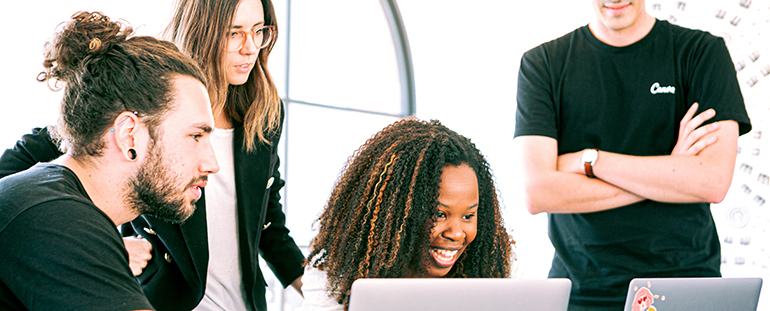
By Dawn Andrews
Despite the decline in U.S. life expectancies in recent years, people are still living longer.1 Due to advances in medicine and financial necessity, many of them are continuing to work into what was historically considered retirement age.2 With five generations in the workplace, many employers are grappling for the first time with multidimensional, age-related conflict.
The good news is that age-diverse teams are more productive, more creative and better at complex decision-making. Age diversity also helps stabilize tenure and turnover. There is definitely a business case for age diversity in the workplace.
The bad news is that age diversity can create conflict, as recently illustrated by the media uproar over the use of the catchphrase “OK, Boomer,” which is sometimes used to dismiss or mock attitudes stereotypically attributed to the baby boomer generation.3 Younger generations complain that so-called boomers are out of touch, resistant to change and not tech-savvy. On the flip side, some boomers complain that younger generations have “Peter Pan syndrome,” are lazy, entitled or spend too much time on their cellphones. Much of this criticism has been levied at millennials.4
This year, the oldest millennials are turning 39 (yes, you read that right), making them almost eligible for age-related protections under the Age Discrimination in Employment Act of 1967, 29 U.S.C. §§621, et seq. Millennials now comprise more than a third of the U.S. workforce.5 As a result, the focus of age-related conflict in the workplace is shifting to the next generation, most often referred to as Generation Z. The oldest members of this new generation have just entered their 20s. As the most populous generation since the baby boomers, Generation Z comprises 36% of today’s workforce.6
It is important to note that generational labels are of somewhat limited utility. They are generally intended to reflect loose boundaries between age groups as determined by the key political, economic and social factors that informed their formative years. For example, baby boomers experienced the expansion of television. Generation X came of age during the computer revolution. Millennials experienced the internet explosion. In contrast, Generation Z has never known a time without constant connectivity. Despite these commonalities, the differences among people within any generation can be even greater than the differences between generations. Generational divides are, at best, a starting point for understanding group behaviors and attitudes.7
What do we know about this new generation of workers? To begin with, Generation Z is the most racially and ethnically diverse generation in United States history.8 While we can imagine the effect their diversity may have on their views, the views of this generation have not been fully studied and could change considerably with changes in national and global events and developments. What we know so far is that Generation Z workers are tech-savvy; they are the first digital natives. They are willing to work hard, but want flexible conditions (think flex schedules and remote work options). They are independently-driven and competitive, but value interaction and feedback.
They are intellectually curious and desire security in recession-proof jobs (probably a succession of them as Generation Z workers change jobs three times as frequently as previous generations).9 The key to engaging this new generation of workers is simple: foster an age-inclusive culture.
Be deliberate in creating age-diverse teams;
• Become an employer of choice by offering employee-centered programs and benefits like paid Kin Care, generous amounts of vacation and student loan forgiveness.
• Treat Generation Z employees with the same level of respect you would someone your own age and tenure.
• Take action to stop disrespectful conducting the workplace.
• Evaluate employees based on performance, not presence.
As luck would have it, these steps are best for attracting and retaining quality employees of any age. Only when employers consciously create a level playing field and an inclusive culture in which all employees feel welcome to bring their whole selves to work can employees reach their performance potential.
Dawn Andrews is the Director of Diversity & Inclusion for the Sempra Energy family of companies.